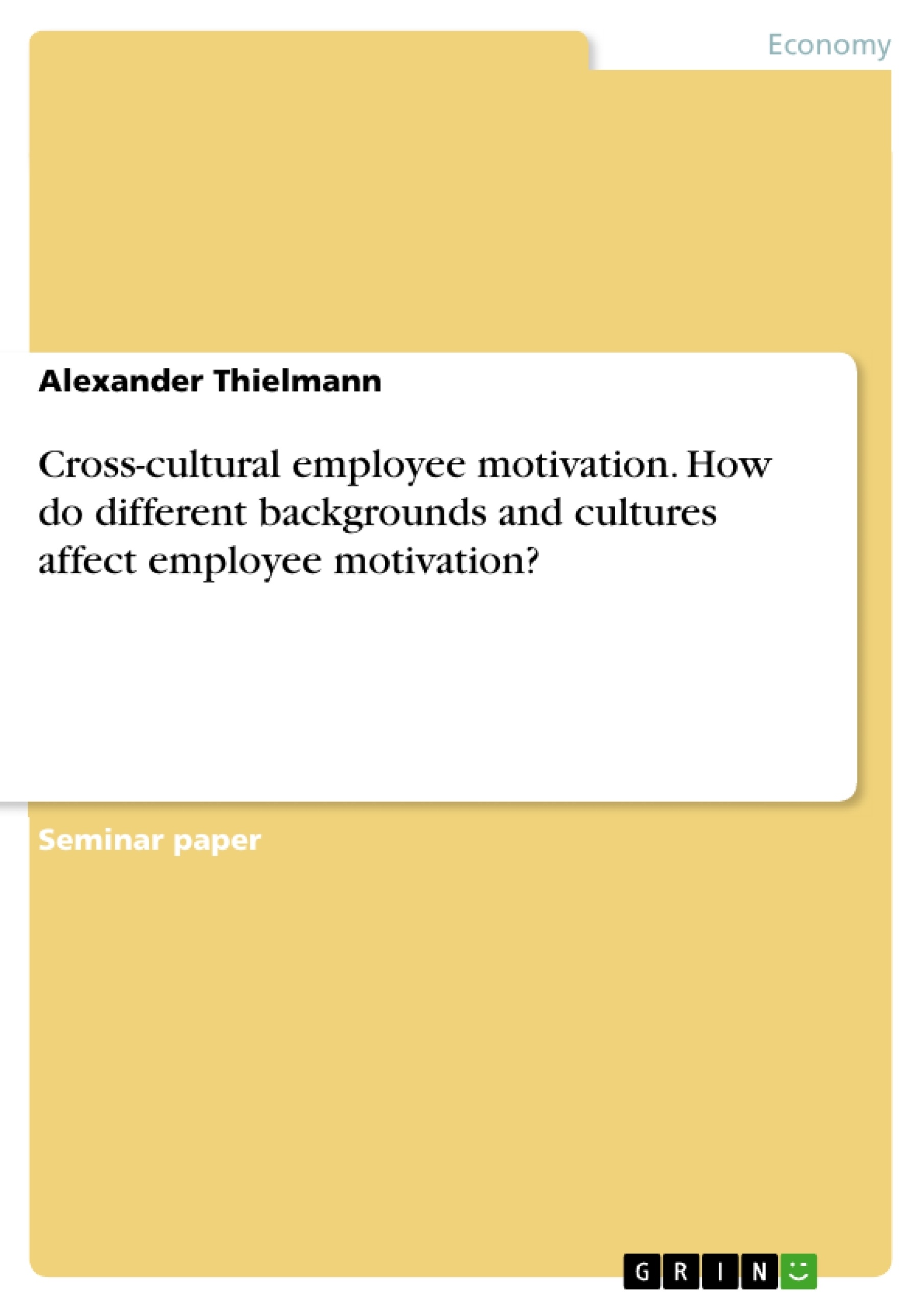This paper will elaborate different needs from people with different backgrounds and cultures and will demonstrate how these differences affect employee motivation. To do so, a short definition of the term "Cross-cultural" will be followed by an explanation of the cultural dimensions of Hofstede and Trompenaars & Hampden-Turner.
Subsequently, part three and four will focus on Employee Motivation. Firstly, it will be elaborated how motivation in general arises, followed by part four in which cross-cultural employee motivation is examined as a comparison between the different hierarchies of needs from Western and Asian societies. In a conclusion the key findings and implications for practice of this paper will be summarised.
Table of contents
1 The increasing trend of globalisation and the importance of cross-cultural differences in employee motivation
2 Cross-cultural
2.1 Definition
2.2 Hofstede's cultural dimensions
2.3 Trompenaars & Hampden-Turner's cultural Dimensions
3 Employee motivation
3.1 Definition and Importance
3.2 The three sources of motivation
3.2.1 Obtain external rewards
3.2.2 Obtain internal rewards
3.2.3 Maintain desired self-concept
4 Cross-cultural employee motivation and Maslow's pyramid of needs
4.1 Maslow's pyramid of needs in Western countries
4.2 The Pyramid of Needs in Asian Cultures
5 Conclusion
References
Appendix
- Citar trabajo
- Alexander Thielmann (Autor), 2021, Cross-cultural employee motivation. How do different backgrounds and cultures affect employee motivation?, Múnich, GRIN Verlag, https://www.grin.com/document/1283174
-

-

-

-
¡Carge sus propios textos! Gane dinero y un iPhone X. -

-
¡Carge sus propios textos! Gane dinero y un iPhone X. -

-
¡Carge sus propios textos! Gane dinero y un iPhone X. -

-
¡Carge sus propios textos! Gane dinero y un iPhone X. -

-
¡Carge sus propios textos! Gane dinero y un iPhone X. -

-
¡Carge sus propios textos! Gane dinero y un iPhone X.

